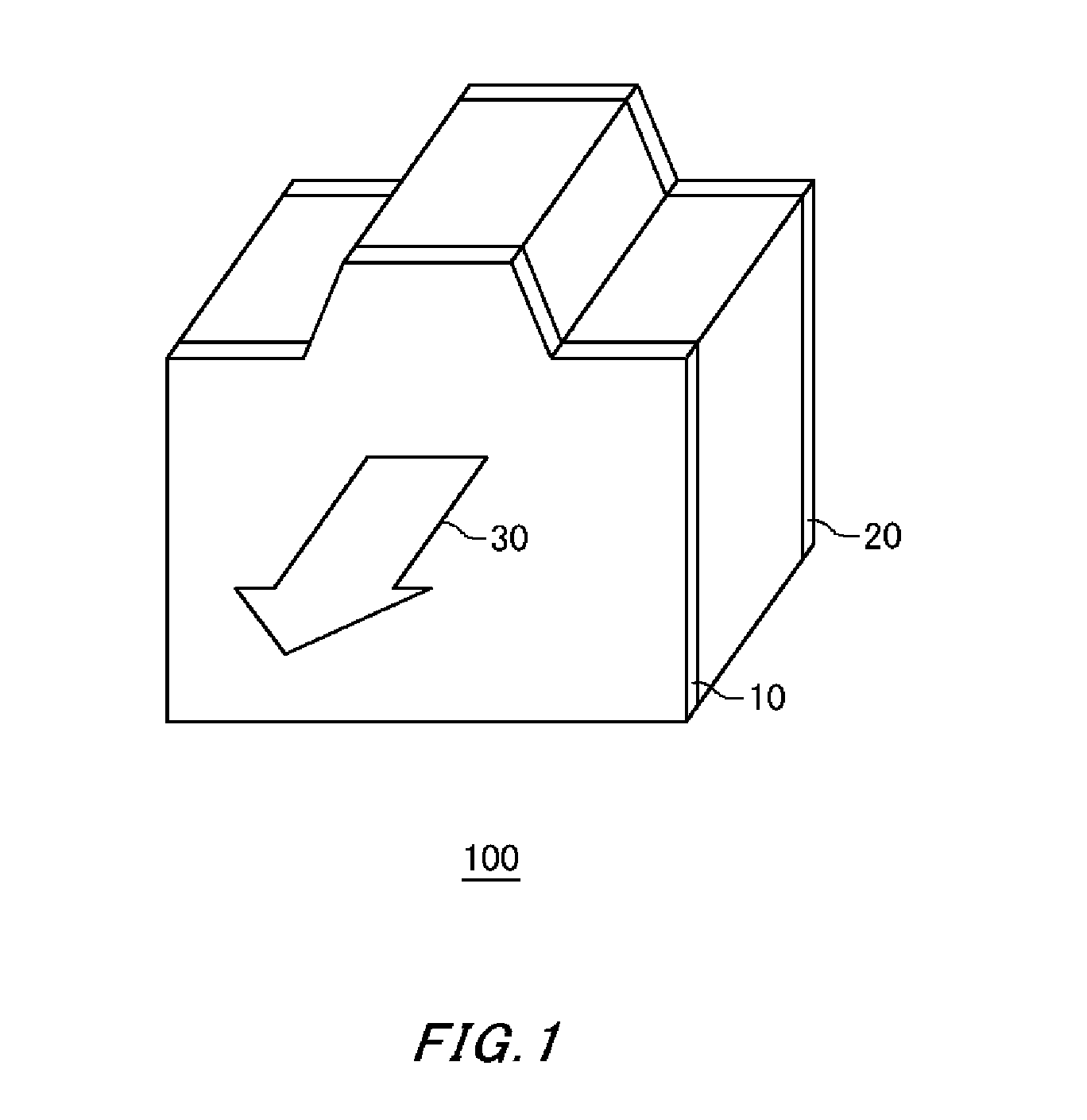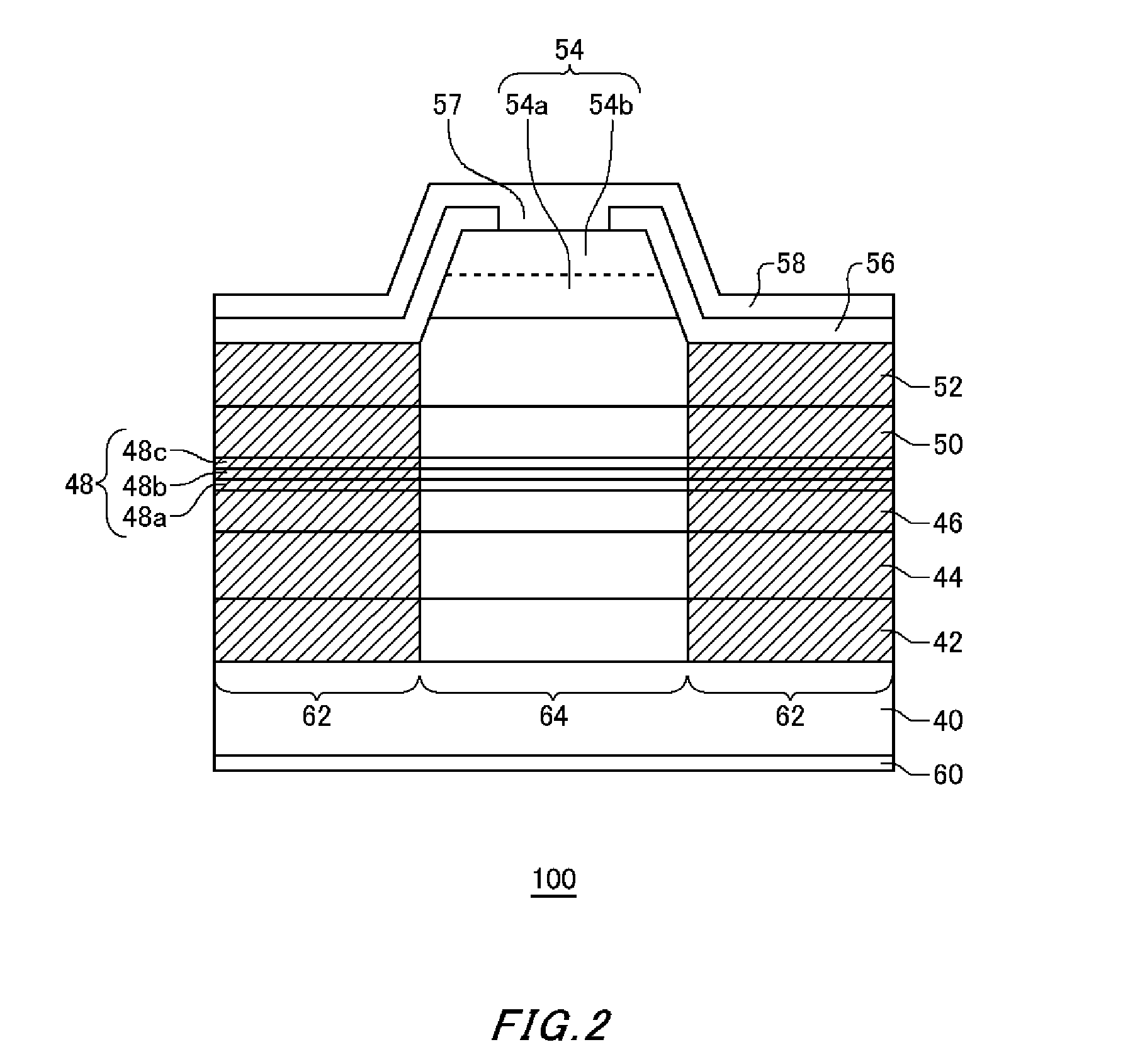Semiconductor light device and manufacturing method for the same
- Summary
- Abstract
- Description
- Claims
- Application Information
AI Technical Summary
Benefits of technology
Problems solved by technology
Method used
Image
Examples
first embodiment
[0044]FIG. 1 is a perspective view of a semiconductor laser element 100 according the present invention. The present embodiment describes an example in which the semiconductor light device is a semiconductor laser element, but the present invention is not limited to this embodiment. The semiconductor laser element 100 may be a Fabry-Perot resonant cavity laser having a ridge structure that confines the current in a striped pattern in the resonant cavity direction. The semiconductor laser element 100 includes a low reflection coating 10 and a high reflection coating 20 at the end surfaces formed by cleaving a wafer. The high reflection coating 20 amplifies the laser light within the resonant cavity by reflecting the laser light. The low reflection coating 10 has a reflectivity with respect to the laser light that is less than that of the high reflection coating 20, and causes laser light that is resonated in the resonant cavity to be output to the outside as the emitted light 30.
[004...
second embodiment
[0085]FIGS. 11 to 15 show steps describing the manufacturing method of the semiconductor laser element 200 according to the present invention. In the same manner as the semiconductor device manufacturing method described above, the semiconductor laser element 200 manufacturing method includes a step of forming a semiconductor layer, a step of depositing two types of dielectric films (first film 70 and second film 72) with different densities on different regions of the semiconductor layer, and a step of forming a window portion 62 and a non-window portion 64 on the semiconductor layer via an annealing process. The step of forming the semiconductor layer includes a step of preparing a semiconductor substrate 40, a step of sequentially depositing, on the semiconductor substrate 40, a plurality of semiconductor layers including the n-type buffer layer 42, the n-type first cladding layer 44, the n-type first guide layer 46, the active layer 48, the p-type second guide layer 50, and the ...
third embodiment
[0094]FIG. 17 is a planar view of an optical waveguide 300 manufactured according to the manufacturing method of the present invention. FIG. 18 is a cross-sectional view over the line A-A of FIG. 17. The optical waveguide 300 includes a semiconductor substrate 310, and a semiconductor layer having a lower cladding layer 320, an optical waveguide layer 330, and an upper cladding layer 340 formed sequentially on the semiconductor substrate 310. The semiconductor layer of the optical waveguide 300 includes a first disordered region 312 that is selectively disordered in a direction perpendicular to the surface of the semiconductor substrate 310, and a second disordered region 314 that is formed to be sandwiched by the first disordered region 312.
[0095]The disordering of the second disordered region 314 is less than the disordering of the first disordered region 312. The disordering of the first disordered region 312 may be at least five times the disordering of the second disordered reg...
PUM
 Login to View More
Login to View More Abstract
Description
Claims
Application Information
 Login to View More
Login to View More - R&D
- Intellectual Property
- Life Sciences
- Materials
- Tech Scout
- Unparalleled Data Quality
- Higher Quality Content
- 60% Fewer Hallucinations
Browse by: Latest US Patents, China's latest patents, Technical Efficacy Thesaurus, Application Domain, Technology Topic, Popular Technical Reports.
© 2025 PatSnap. All rights reserved.Legal|Privacy policy|Modern Slavery Act Transparency Statement|Sitemap|About US| Contact US: help@patsnap.com



